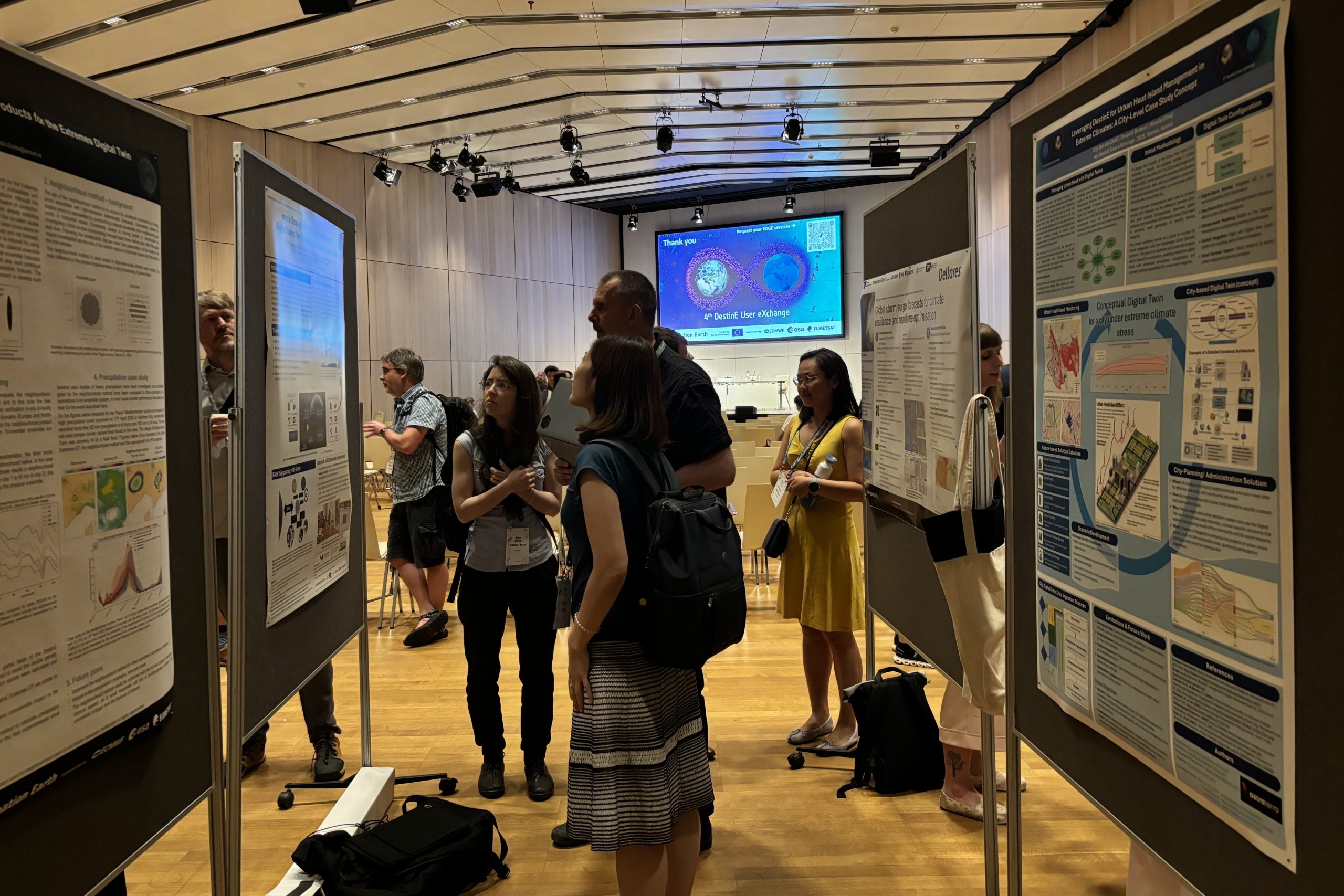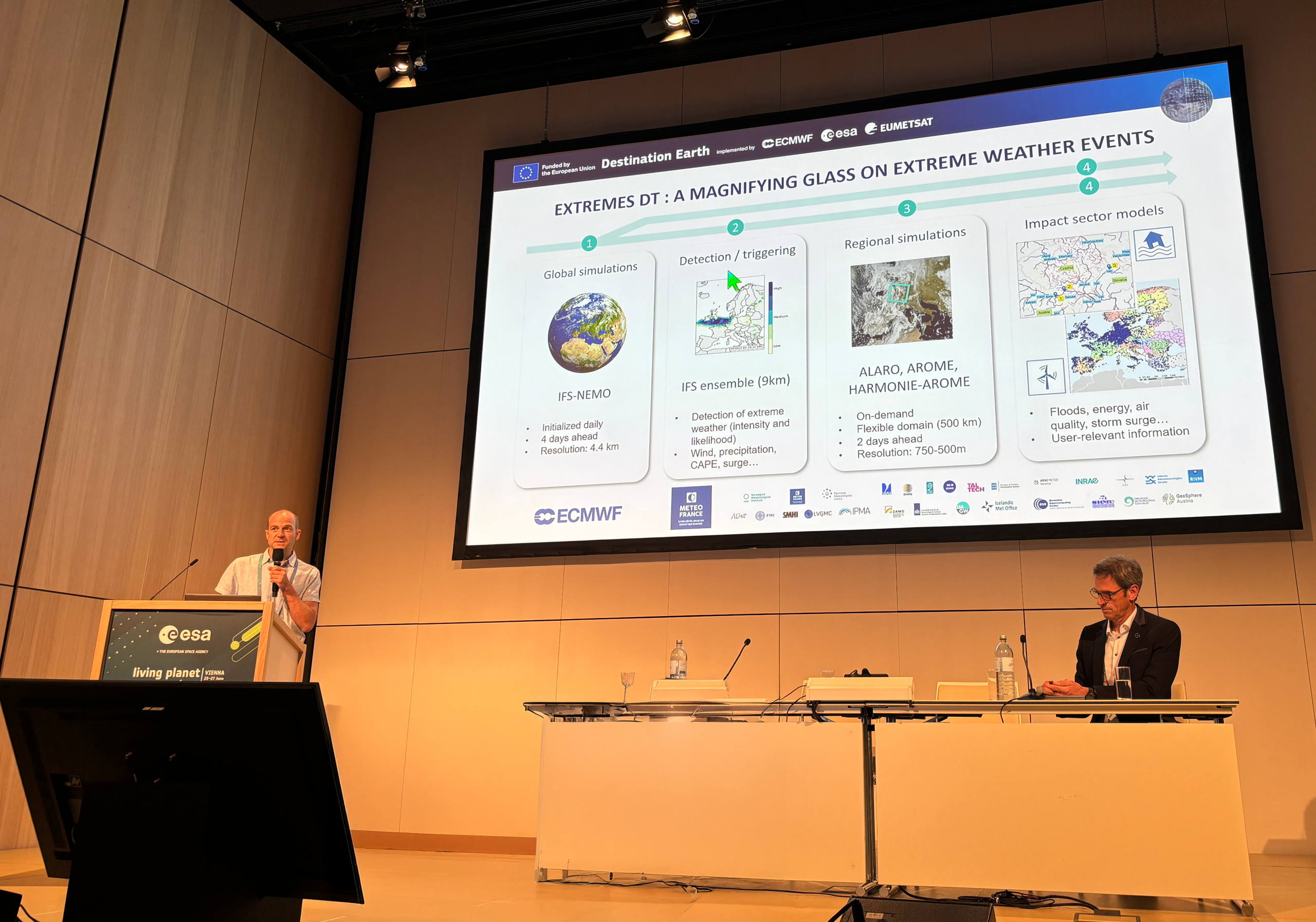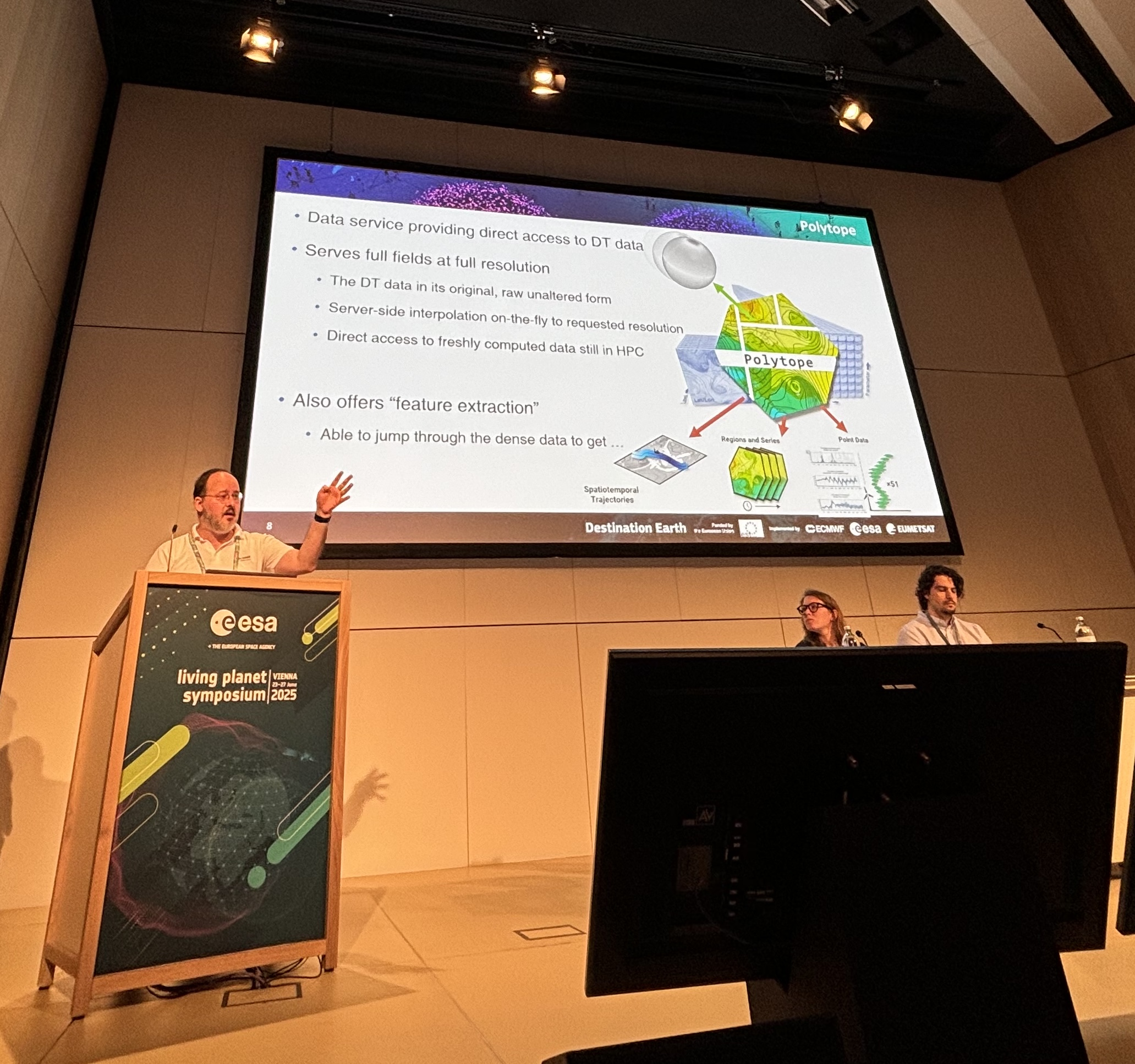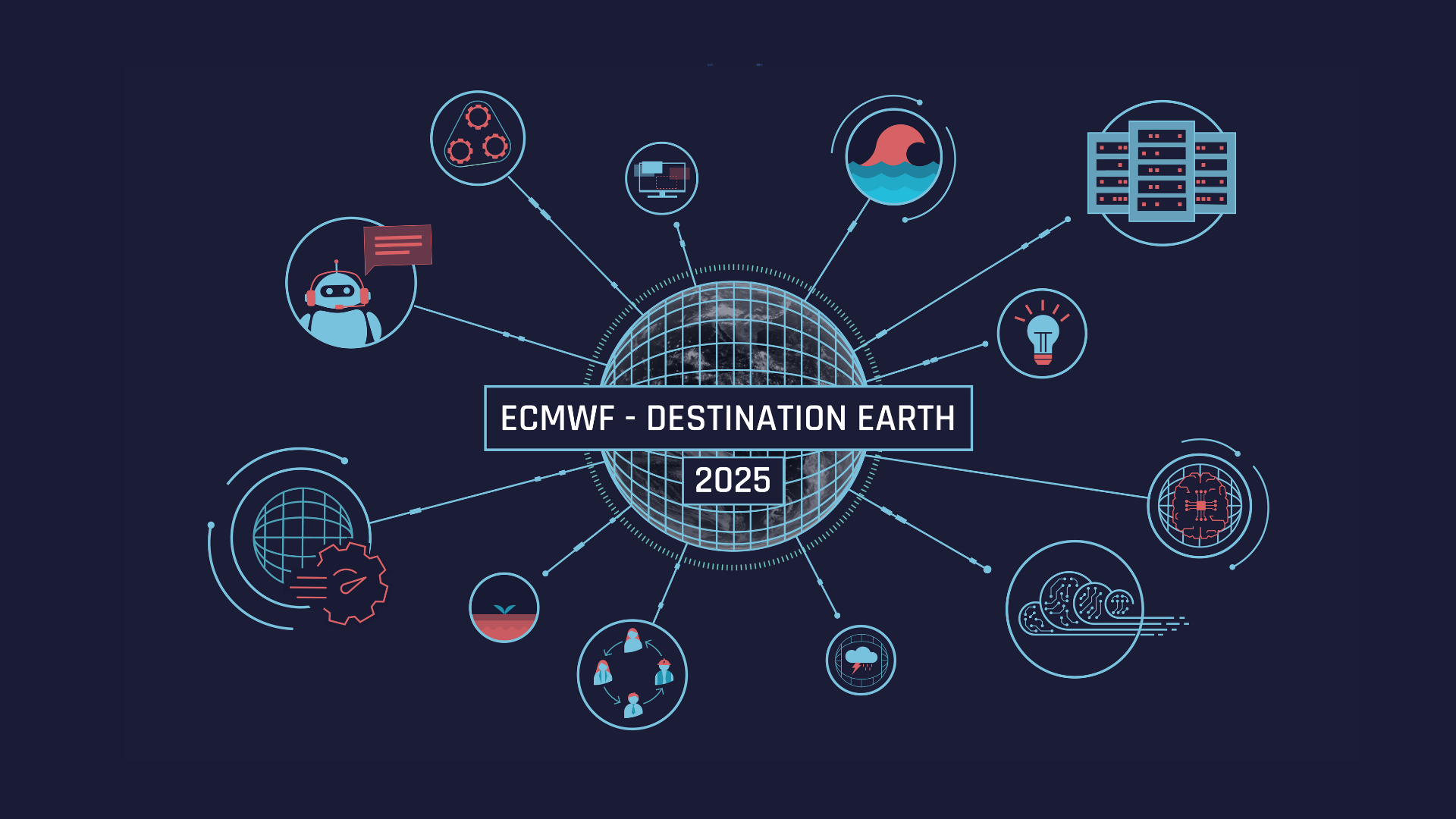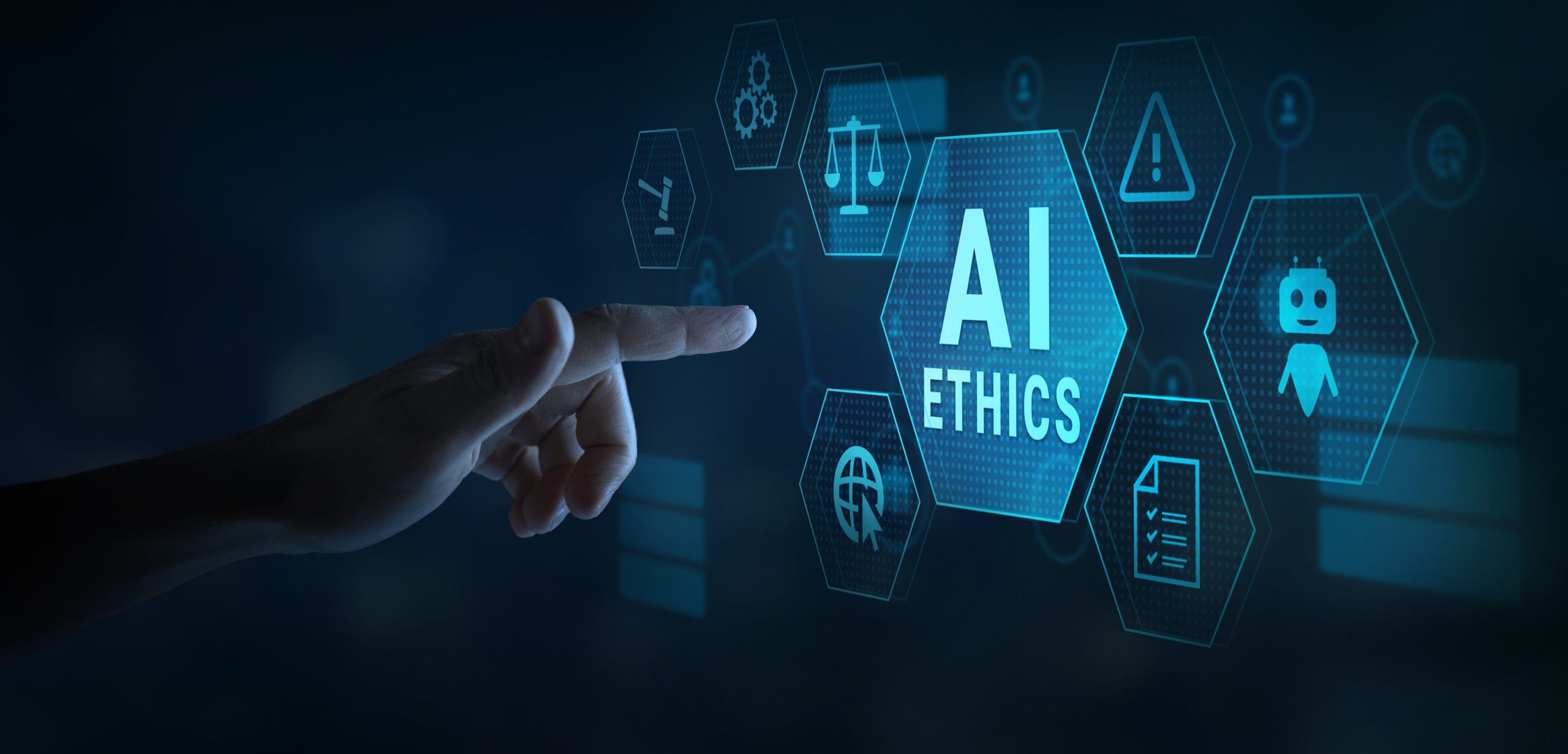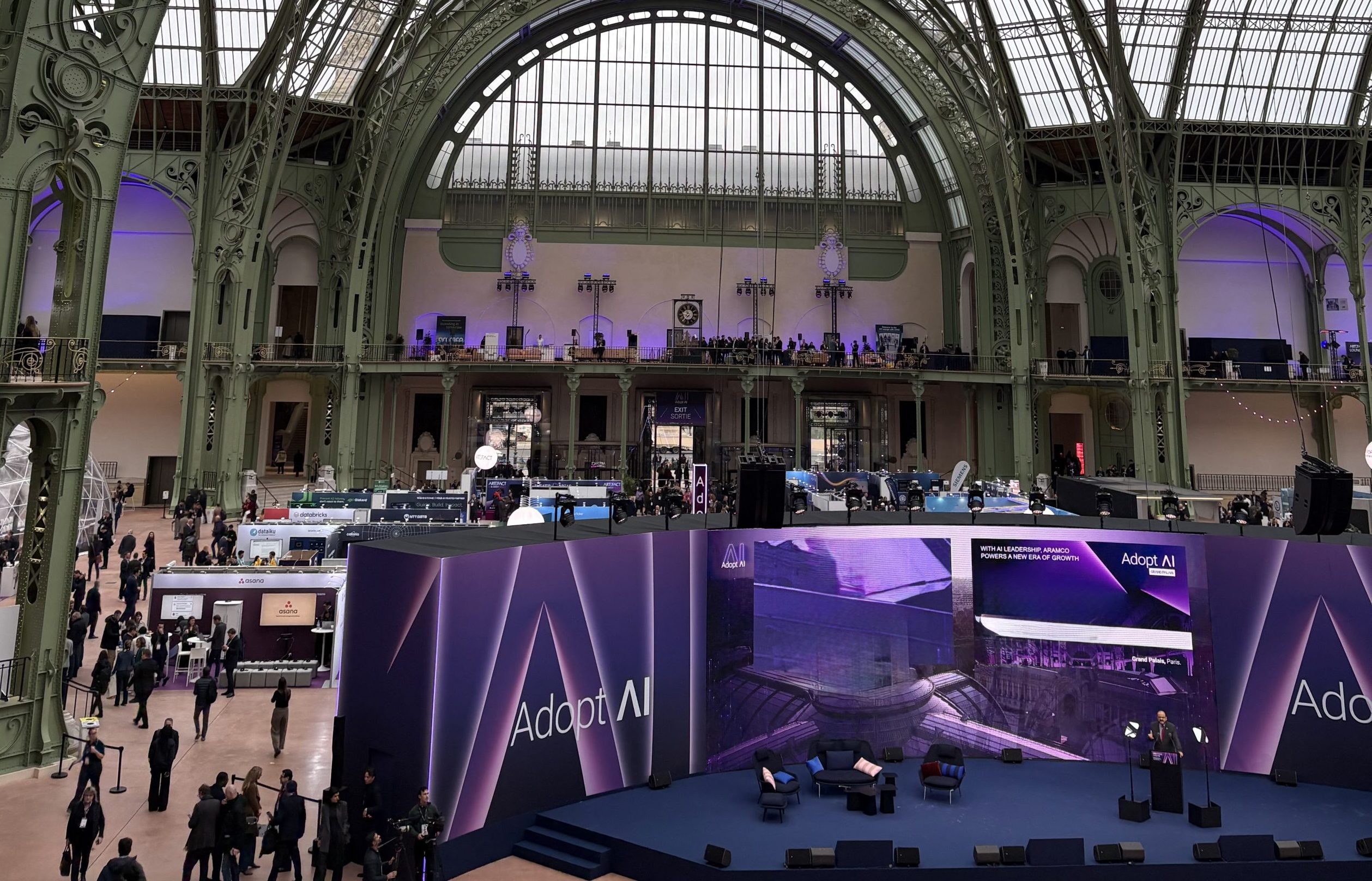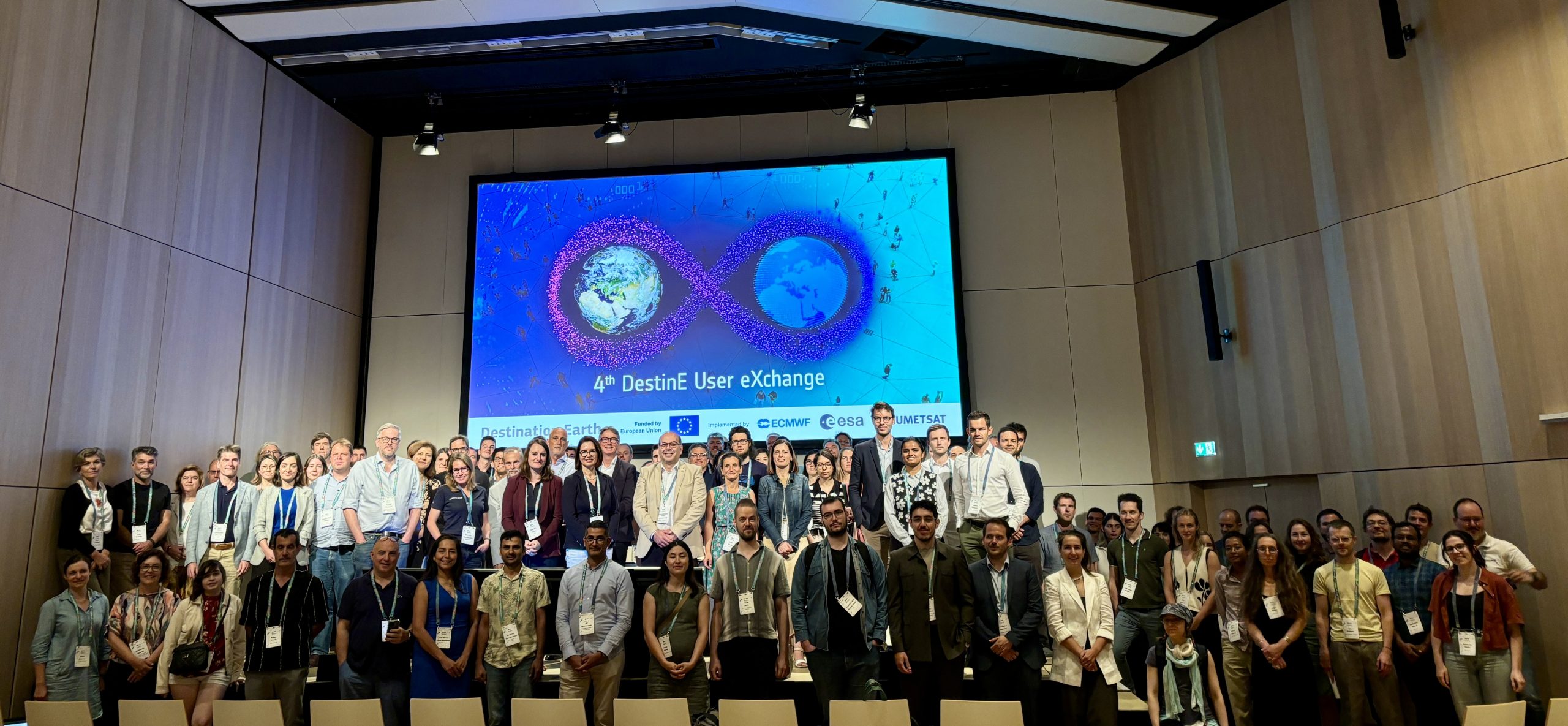
It’s been two years and a half since the first Destination Earth (DestinE) User eXchange in Frascati, Italy. The 4th DestinE User eXchange in Vienna, Austria on 25-26 June 2025 has consolidated these meetings as DestinE’s town square. The User eXchange format allows users to interact directly with the implementing entities, their over 100 partner institutions, and the European Commission DG CNECT leading the initiative. Gathering over 300 participants on site at the Austria Center during the European Space Agency’s Living Planet Symposium, and 150 online, the 4th User eXchange gave an overview of the fast development of the DestinE system.
The three entities entrusted by the European Commission’s Directorate-General for Communications Networks, Content and Technology (DG Connect) to implement DestinE, the European Centre for Medium-Range Weather Forecasts (ECMWF), the European Space Agency (ESA), and the European Organisation for the Exploitation of Meteorological Satellites (EUMETSAT) have set solid foundations for the DestinE system components: the digital twins, the Digital Twin Engine, the DestinE platform and the Data Lake. Since October last year, the DestinE system is open to users, whose feedback is important for its continued evolution.
DestinE’s role in Europe’s digital transformation and climate adaptation
The 4th Destination Earth User eXchanged opened with speeches from, Nicolaus Hanowski, Head of Ground Segment & Mission Operations at ESA and Liina Munari, Deputy Head of Unit – High Performance Computing and Applications at DG-CNECT. Both emphasised the role of DestinE in supporting EU priorities across climate adaptation, resilience, and digital transformation through European collaboration.
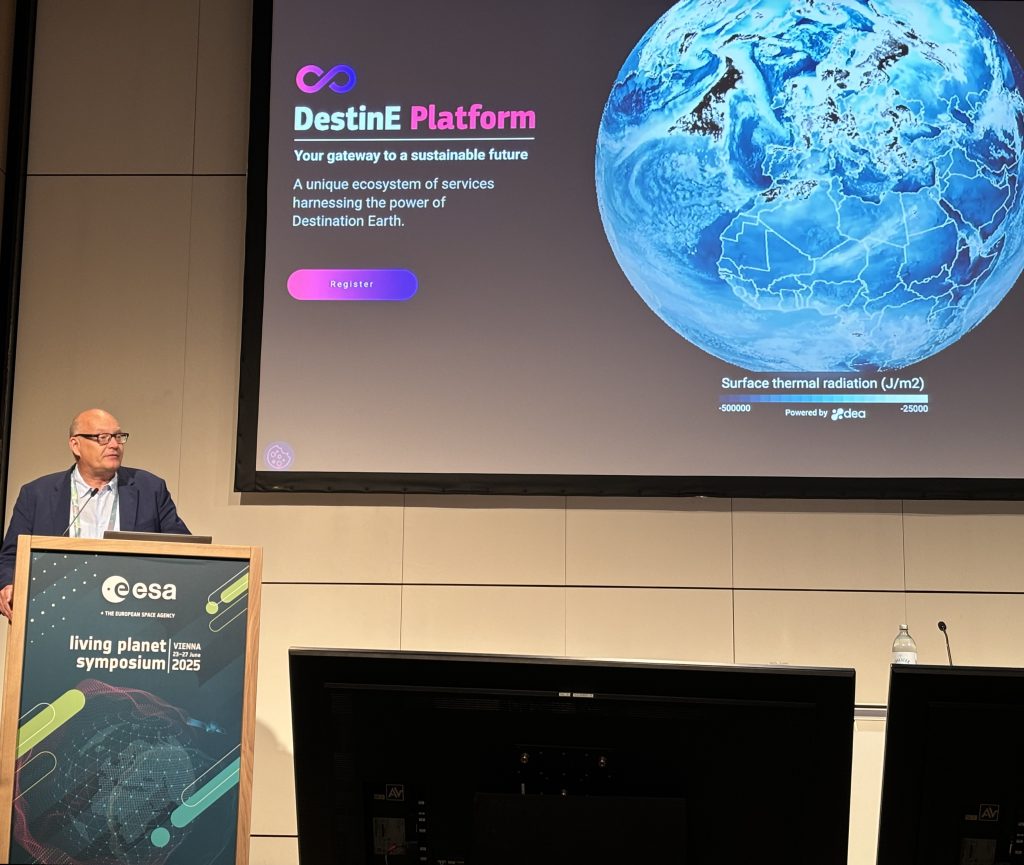
This message was also conveyed in the opening keynote by Ana Patricia Oliveira, CTO for Space at +Atlantic, partner of DestinE in a number of Use cases.
She delivered an engaging speech on her motivations and methods to use a system that can make a real difference for urban planning for heat resilience, her domain of expertise. It’s a clear example of how DestinE is helping to bridge the gap between climate science and real world uses
Listen to Ana Oliveira to find out more about her involvement in DestinE.
The event also highlighted DestinE’s intersection with other European innovative initiatives, like the launch of AI Factories across Europe – a major development for the European Commission efforts to establish a world-class digital ecosystem. Charalampos Tsitlakidis, Head of Sector Destination Earth at the European Commission’s DG CNECT explained:
“Destination Earth is not a standalone initiative. It’s part of a bigger family. It’s part of the overall ecosystem of the common European data spaces. And we are in full synergy with major key actions, such as the AI factories. In turn, this creates new opportunities for Destination Earth users in these new rising ecosystems. We are working closely with our services in the European Commission to make sure that Destination Earth contributes to the number of very important union initiatives, and there I can mention a few of them, like the forthcoming European Climate Adaptation plan, the Water Resilience Strategy, the European Mission on Climate Change Adaptation and of course the EUCRA, the second European Climate Risk Assessment report.”
By working together, DestinE and the AI factories will create numerous synergies benefiting both.
Developments in the Digital Twins and the Digital Twin Engine
Following the User eXchange tradition, the three entrusted entities updated participants on developments since the previous edition.
Irina Sandu, Director for DestinE at ECMWF, highlighted some of the key advances made by the wide partnership, involving more than a hundred institutions from over 25 countries in Europe, that contribute to the implementation of the Climate Change Adaptation Digital Twin (Climate DT), the Weather-Induced Extremes Digital Twin (Extremes DT) and the Digital Twin Engine in close collaboration with ECMWF.
Since the beginning of the initiative, ECMWF and its partners have built the software and modelling infrastructure for a bespoke simulation capability able to address ‘what if’ questions, such as “What specific adaptation measures can limit the consequences of recent and future events?”.
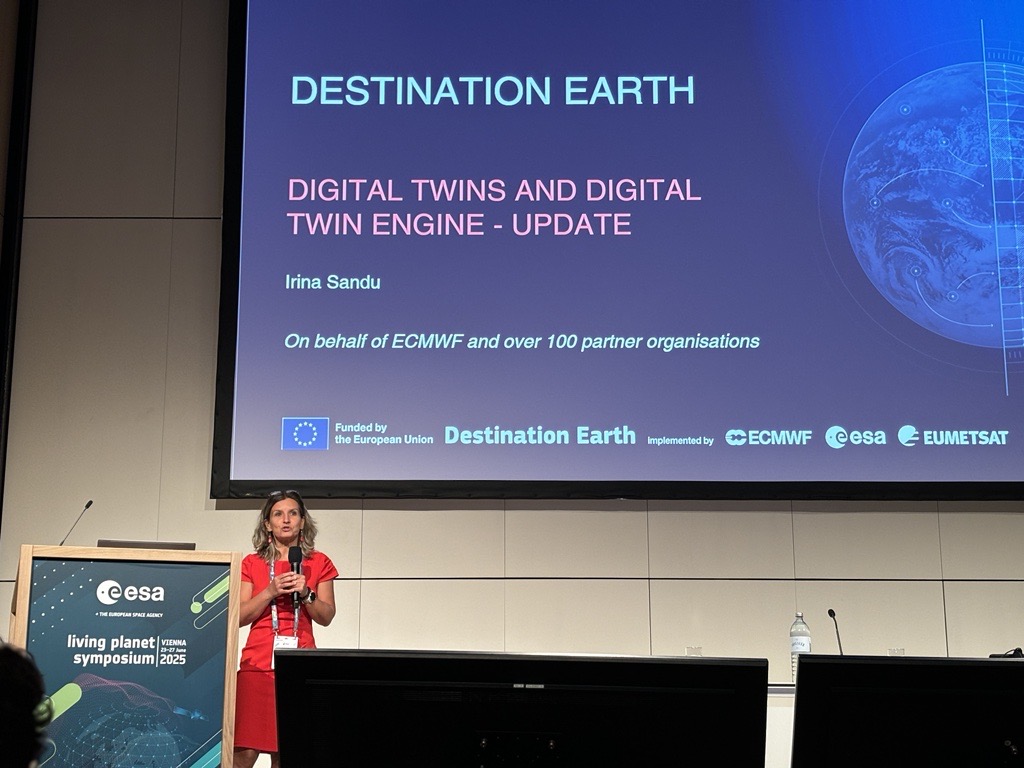
“In Phase 2, significant progress has been made toward operationalising multi-decadal climate projections with the Climate Digital Twin. Drawing on decades of operational weather prediction practices, a structured production cycle is being established, with separate development, piloting, and operational workflows. This approach allows new model capabilities to be tested while moving toward an operational stream that will deliver reliable, traceable, and quality-controlled simulations aligned with recognised data and interoperability standards,” said Irina Sandu.
The established end-to-end Climate DT workflow are now being used to produce a new set of simulations with the three global climate models (IFS- NEMO, ICON, IFS –FESOM) at a horizontal resolution of about 5 km for the period 1990-2050.
Additionally, the Climate DT team is producing so-called storyline simulations, that assess how recently experienced extreme event would unfold in a colder or warmer climate scenario, using innovative nudging techniques. These runs as well as the prototype climate scenarios produced in Phase 1 are already available through the DestinE platform.
Hear from Katherine Grayson from the Barcelona Supercomputing Center (BSC) on their work on the storyline simulations of the Climate DT.
The Extremes DT is producing daily global simulations of extreme weather at a resolution of 4.4 km four days ahead and regional simulations two days ahead at 500 to 700m for extreme events of high impact, piloted when extreme events occur over Europe.
During the last months, ECMWF and the consortium led by Météo France – to build the regional component of this digital twin – are working to examine the added value of the Extreme DT data together with the national meteorological services.
Watch the video for further insights into the work on the Extremes DT from Natalie Theeuwes from the Royal Netherlands Meteorological Institute.
Applications specific for the sectors most impacted by climate change and weather extremes are being developed in parallel or directly embedded in the workflows of both digital twins, with an upcoming batch of Pilot Services that will demonstrate the use of the DTs.
Irina Sandu insisted on the fact that: “The digital twins are complementing the existing capabilities and national and European level, aiming to support the national institutions which are mandated to protect lives and properties, and in particular the national meteorological and hydrological services by providing an additional tool which has enhanced flexibility of simulations and outputs.”
Christoph Wittmann from GeoSphere Austria, who is also part of the consortium working on the Extremes DT, puts it similarly by saying:
The DestinE Data Lake and the DestinE Platform
EUMETSAT’s Technical Coordinator for DestinE, Danaële Puechmaille, presented the latest developments for the DestinE Data Lake. The main focus is on upgrading the data bridges that allow to store the digital twin data and make it available to users via the DestinE platform, and on expanding the datasets federated in the DestinE data portofolio.
The Data Lake is also adapting to the numerous requests of partners and users, including the possibility for users to develop applications for selected datasets.
Kathrin Hintze, Head of DestinE Development Section at ESA, gave an overview of the key developments in the DestinE Platform, that now offers 23 services, and has more than 3,000 registered users and over 52,000 visitors from all over Europe.
The platform recently launched a Learning Hub that provides support and resources for users to implement their own services via the Onboarding section, while gathering feedback for shaping the further development of the DestinE system. There are already 44 requests for future services, so the platform will continue to grow. The services include everything from data visualisation, data handling, coding and much more.
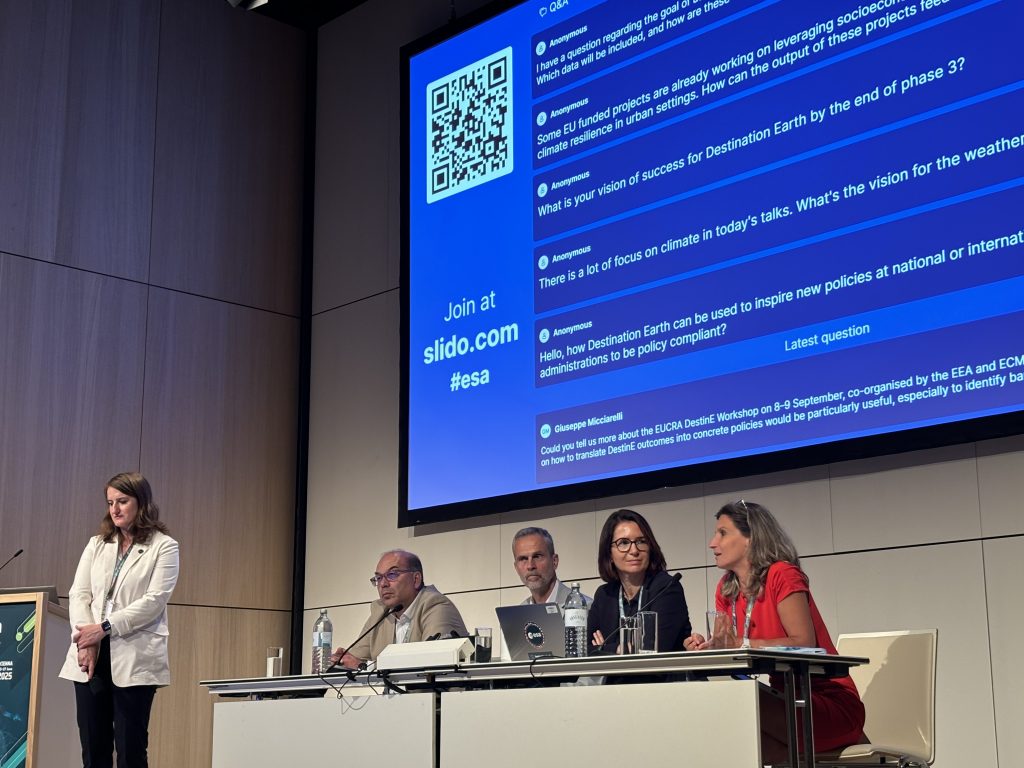
The morning sessions included a panel discussion, moderated by ESA’s Franka Kunz, including Irina Sandu, Kathrin Hintze and EUMETSAT’s DestinE system manager Michael Schick and Charalampos Tsitlakidis, where attendants could openly discuss and address their questions to the participants.
A programme focusing on concrete examples
During the afternoon, after a break and poster session, the spotlight was on the Climate and Extremes Digital Twins – with two sessions co-chaired by ECMWF Applications Partnership Lead for DestinE, Jörn Hoffmann and ECMWF scientists Sebastian Milinski and Benoît Vannière. The sessions featured talks from partners working on different aspects of each of the digital twins.
The programme of Day 2 began with a hands-on session in which EUMETSAT’s Michael Schick, ECWMF’s Tiago Quintino and ESA’s Inés Sanz Morere presented the different ways to access digital twin data and the existing data-oriented services. Tiago Quintino explained how the digital twin data can be accessed via the Polytope service, which allows to extract features such as timeseries or regions, easing the use of the vast amounts of data produced by the digital twins. Polytope and Aviso – a data notification service – which are key components of the Digital Twin Engine, are available from the DestinE platform.
The last session, “Listening to the Users, Turning Feedback into Functionality”, included the results of surveys about the attractiveness and the perception of DestinE, a presentation about a methodology for co-designing DestinE services, and a proposal for a Quality Control Framework Concept for DestinE, procured by ECMWF and introduced by ECMWF Senior Technical Officer, Andre Obregon.
Before the closing of the event, Jörn Hoffmann, Michael Schick, Franka Kunz, and Claudia Vitolo, EO Digital Twin Earth Applications Scientist at ESA, explained what is coming to users in the coming months.
On the ECMWF side, there are several developments coming up, such a series of pilot services focused on key sectors particularly sensitive to climate change and weather extremes, the development of a forecast-in-a-box concept and a series of machine-learning demonstrators for energy systems, water resilience, agriculture and for combining multiple forecasts and climate projections.
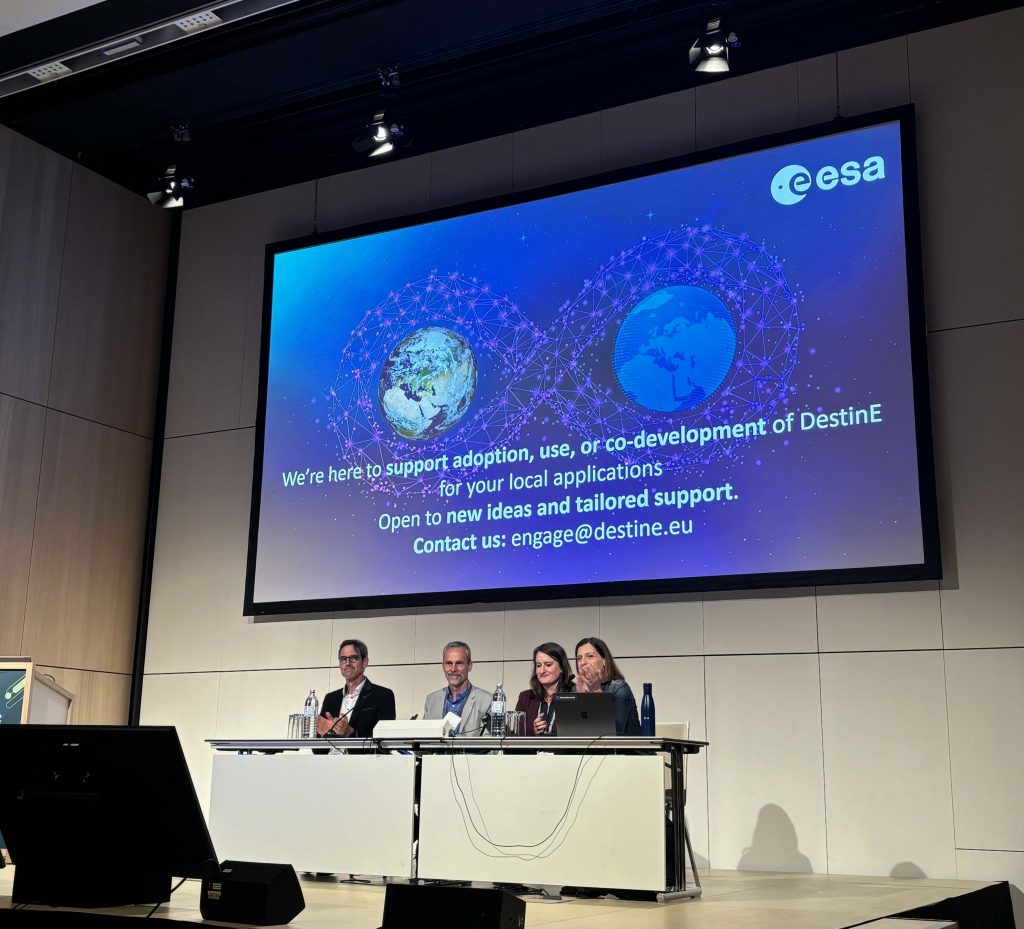
Jörn Hoffmann said:
“Destination Earth is entering an exciting period as we are starting to see the real action, users and applications . We are keen to see users make their own use of the data and novel capabilities provided by DestinE. The direct link between those developing the system and those looking to exploit it is crucial for this. Conversations in meetings such as the User eXchange help us implement the system in line with how users are looking to exploit it.”
For Michael Schick, DestinE needs to be used and trusted as an additional source in the national value chains because data & services are only valuable when used.
System foundations in place and outlook to the next User eXchange
The 4th User eXchange in Vienna underscored that the core of the Destination Earth system is now firmly in place and evolving rapidly. Through strong institutional collaboration and continuous innovation, the initiative is advancing to support Europe’s climate and digital strategies, helping stakeholders turn cutting-edge digital twin technology into actionable insights.
The next User eXchange will again be co-organised by the three entrusted entities, this time in Brussels in 2026, and led by ECMWF.
Destination Earth is a European Union-funded initiative launched in 2022, with the aim to build a digital replica of the Earth system by 2030. The initiative is being jointly implemented under the leadership of the EU Commission’s DG CNECT by three entrusted entities: the European Centre for Medium-Range Weather Forecasts (ECMWF), responsible for the creation of the first two ‘digital twins’ and the ‘Digital Twin Engine’, the European Space Agency (ESA) responsible for building the ‘Core Service Platform’, and the European Organisation for the Exploitation of Meteorological Satellites (EUMETSAT), responsible for the creation of the ‘Data Lake’.
We acknowledge the EuroHPC Joint Undertaking for awarding this project strategic access to the EuroHPC supercomputers LUMI, hosted by CSC (Finland), and the LUMI consortium, Marenostrum5, hosted by BSC (Spain) Leonardo, hosted by Cineca (Italy) and MeluXina, hosted by LuxProvide (Luxembourg) through a EuroHPC Special Access call.
More information about Destination Earth is on the Destination Earth website and the EU Commission website.
For more information about ECMWF’s role visit ecmwf.int/DestinE
For any questions related to the role of ECMWF in Destination Earth, please use the following email links:
